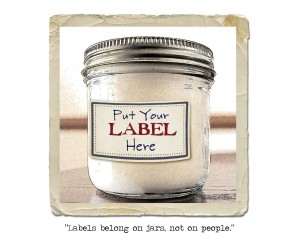As much as Americans tout a maverick, even rebellious spirit, we spend a lot of time, effort and cold hard cash trying to get to “normal.” Even those who consider themselves unconventional eventually gravitate to clans with similar interests as a means for fitting in somewhere. Whether it’s an emotional need for acceptance, a primal urging towards community or something to do with strength in numbers, “normal” appears to be a big deal–especially when it comes to sexuality.
Here’s the thing about “normal:” When a particular social tribe takes it on themselves to define what is normal, the default result is divisiveness and, to a large extent, intolerance when it comes to anything outside the resulting definition–whether it’s actually based in fact or not. While compliance with certain values (for example, protecting children) has its place in a civilized community, power within groups tends to obsesses over what certain behaviors are, rather than what they actually do. Even if such nonconformity is positive, productive and poses no threat whatsoever to anyone else in the circle, challenging the prevailing groupthink is likely to be perceived as a disruption to the status quo and therefore, labeled as (you guessed it) “abnormal.” More often than not, the label is otherwise baseless and is frequently even hypocritical, but the stigma attached usually has a real and significant impact on whomever is tagged with it.
Leadership to confront and combat mythologies about “normal sexual behavior” has been slow to materialize, but sustained efforts have been made during the past 50-60 years–even in the face of stiff opposition and incredulity. For example, since 1947, The Kinsey Institute (originally known as The Institute for Sex Research) has led the field in discerning facts regarding human sexuality, dispelling many unfounded conceptions and redefining “normal” much more broadly than previously believed or accepted. As one might imagine, however, political and legal controversies arising from many of their findings served to impede (and in some cases, actually derail) progress and unnecessarily prolong a state of intolerance. The fact that the institute has remained steadfast in its mission says a lot about its leaders in their quest to better define “normal” more realistically and in an inclusionary manner, but should it really be that hard?
Human history is replete with stunning examples of groundless beliefs trumping coherent facts, but what’s even more astonishing is the consistent, irrational tendency to embrace certain beliefs rather than uncover and accept a reality which might be in opposition. Without a doubt, a lot of that is purely political, but acceding to the power of groupthink simply to keep a superficially steady boat from rocking is a recipe for doom. There are plenty of solid examples of that as well.
While it’s certainly much easier to merge with the popular pool of “normal” and bask in its illusory safety, good leadership is less concerned with what’s popular than it is with what’s real and right. Indeed, it takes a lot of spunk and moxy to go against the formalities of normalities and instead inspire a lasting respect for rational discussion and eliminating knee-jerk intolerance. There’s likely to be tremendous pushback when facts are uncovered that disrupt ingrained beliefs, but progress cannot be made with heads buried in the sand. Opposing any kind of bullying takes courage, commitment and conviction but the result can literally change the world for the better.
What’s more “normal” than that?

